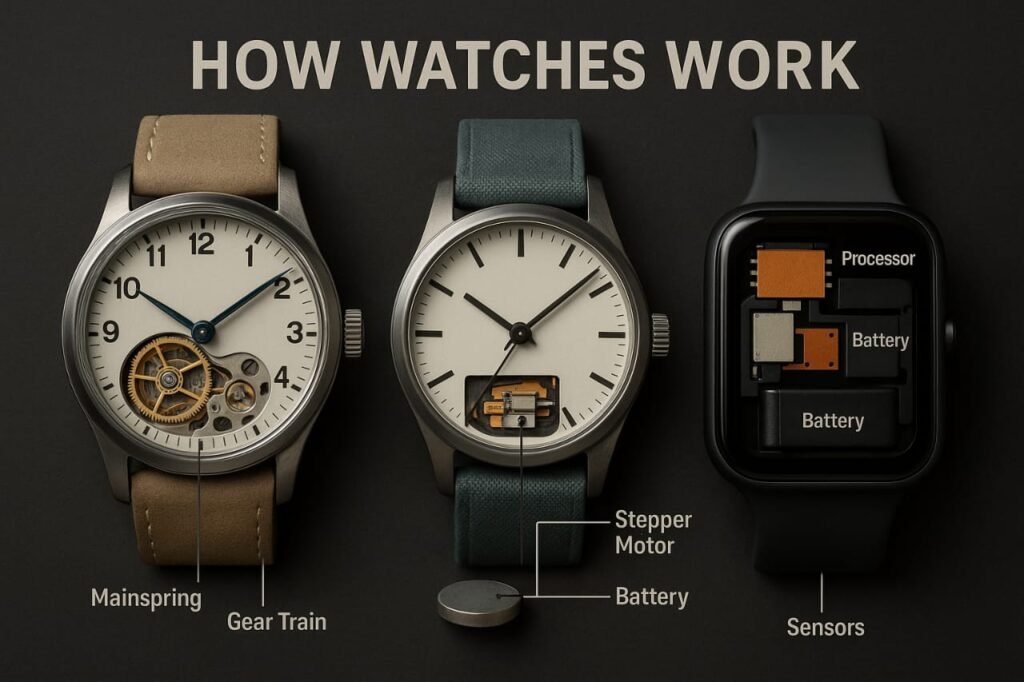How Watches Work-
Watches are one of the most fascinating inventions in human history, blending engineering, art, and science into a small, wearable device. Though they all serve the same purpose—to tell time—the mechanisms behind different types of watches vary significantly.
There are three primary types of watches: mechanical, quartz, and smartwatches. Each functions based on a unique technology, but all aim to measure and display time accurately.

1. Mechanical Watches: Time Powered by Springs
Mechanical watches are the oldest and most traditional type of watch. They operate without any batteries or electronics, relying instead on intricate systems of gears and springs.
At the heart of a mechanical watch is a component called the mainspring. When you wind the watch, either manually or through an automatic rotor that winds as you move, the mainspring stores energy.
This energy is then released gradually, powering a series of gears called the gear train. The gear train regulates how fast the energy is released and moves the hands of the watch accordingly.One of the most important components is the escapement, which controls the release of the energy in regular intervals.
It interacts with the balance wheel, a weighted wheel that oscillates back and forth. This regular motion ensures the watch keeps accurate time.
Mechanical watches require regular winding and servicing, but they are cherished for their craftsmanship and longevity.
2. Quartz Watches: Precision Through Crystals
Quartz watches, invented in the 20th century, revolutionized timekeeping with their simplicity, accuracy, and affordability. Instead of using springs and gears, quartz watches are powered by a small battery.
The battery sends an electrical current to a piece of quartz crystal, which vibrates at a very precise frequency—32,768 times per second. These vibrations are picked up by an electronic circuit, which converts them into regular electric pulses. These pulses drive a small stepper motor that moves the watch hands or powers a digital display.
Quartz watches are highly accurate, usually losing or gaining only a few seconds per month. They require minimal maintenance beyond occasional battery replacement, making them ideal for everyday use.
3. Smartwatches: Mini Computers on the Wrist
Smartwatches represent the modern evolution of timepieces. These digital watches do much more than tell time—they connect to smartphones, track health data, run apps, and more.
Smartwatches run on rechargeable batteries and operate using processors and operating systems like Android Wear or watchOS.
They use sensors to monitor your heart rate, steps, and sleep, and touchscreens to display notifications and apps.
Timekeeping is managed by an internal clock that is synchronized with your smartphone or the internet.
Smartwatches offer versatility and convenience, but they require regular charging, and their functionality depends on software updates and internet connectivity.
Conclusion
In summary, watches work through a range of technologies—from the finely tuned gears of mechanical watches to the high-frequency vibrations of quartz crystals, and the smart sensors and processors of digital timepieces.
Each type of watch has its own strengths and appeal, whether you value tradition, accuracy, or connectivity. Understanding how watches work helps us appreciate the craftsmanship and technology packed into these tiny yet powerful devices.

